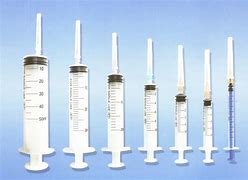Analysis of the Global Respiratory Distress Syndrome Market
The most common respiratory disorder in preterm infants is
respiratory distress syndrome, also known as hyaline membrane disease.
Inadequate pulmonary surfactant is the primary cause of respiratory distress
syndrome. Shortness of breath, nasal flaring, and grunting are all symptoms of
respiratory distress syndrome. RDS appears immediately or within 4 hours of
birth. Antenatal glucocorticoids, continuous positive air pressure (CPAP), positive
end expiratory pressure, and surfactant replacement therapy can all be used to
treat respiratory distress syndrome. According to the UCSF Medical Centre, RDS
affects 40,000 infants in the United States each year and accounts for
approximately 20% of neonatal deaths.
Market Scope
The respiratory distress syndrome market is divided into
product, route of administration, drug type, age, and end user segments. The
growth among segments allows you to analyses niche pockets of growth and market
approaches, as well as determine your core application areas and the difference
in your target markets. The respiratory distress syndrome market can be divided
into two parts: diagnosis and treatment. The respiratory distress syndrome
market can be divided into three segments based on route of administration:
oral, injectable, and nasal. The respiratory distress syndrome market can be
divided into two categories based on drug type: branded and generic. The
respiratory distress syndrome market can be divided into two age groups:
children and adults. The respiratory distress syndrome market can be divided
into hospitals, specialty clinics, and others based on end user.
Impact from Covid19 Pandemic
The COVID-19 pandemic is closely linked to respiratory
distress syndrome symptoms. Because patients suffering from respiratory
distress are at high risk of COVID-19 infection, doctors must make every effort
to classify patients based on severity so that they can be treated with
ventilatory management or surfactant therapy. As a result of the pandemic,
there has been a significant increase in the use of respiratory distress
treatments such as surfactant therapy, oxygen therapy, and ventilation support
for patients with severe COVID-19 symptoms. As a result of the pandemic, there
is a positive impact on the market for respiratory distress syndrome treatment.
Market Overview
On the basis of region, the global respiratory
distress syndrome treatment market is segmented into North America, Latin
America, Europe, Asia Pacific, Middle East, and Africa. North America holds
dominant position in the respiratory distress syndrome treatment market due to
higher patient population and high mortality rate due to respiratory distress.
According to the US National Library of Medicine, the incidence of respiratory
distress syndrome in the United States in 2017 was 78.9 per 100,000 people. As
a result, pharmaceutical companies are focusing on research and development to
deal with the region's higher incidence. For example, in 2018, ONY Biotech
applied to the US Food and Drug Administration for an aerosolized infuser
treatment protocol. As previously mentioned, the respiratory distress syndrome
market is analyzed, and market size information is provided by country,
product, route of administration, drug type, age, and end user. Furthermore,
according to the National Library of Medicine, the incidence of respiratory
distress syndrome in Europe in 2017 was 17.9 per 100,000 people. After North
America, Europe has the second highest rate of mortality from respiratory
distress syndrome. Furthermore, the COVID-19 pandemic has a negative impact on
Europe, as coronavirus infection is associated with respiratory disease.




Comments
Post a Comment